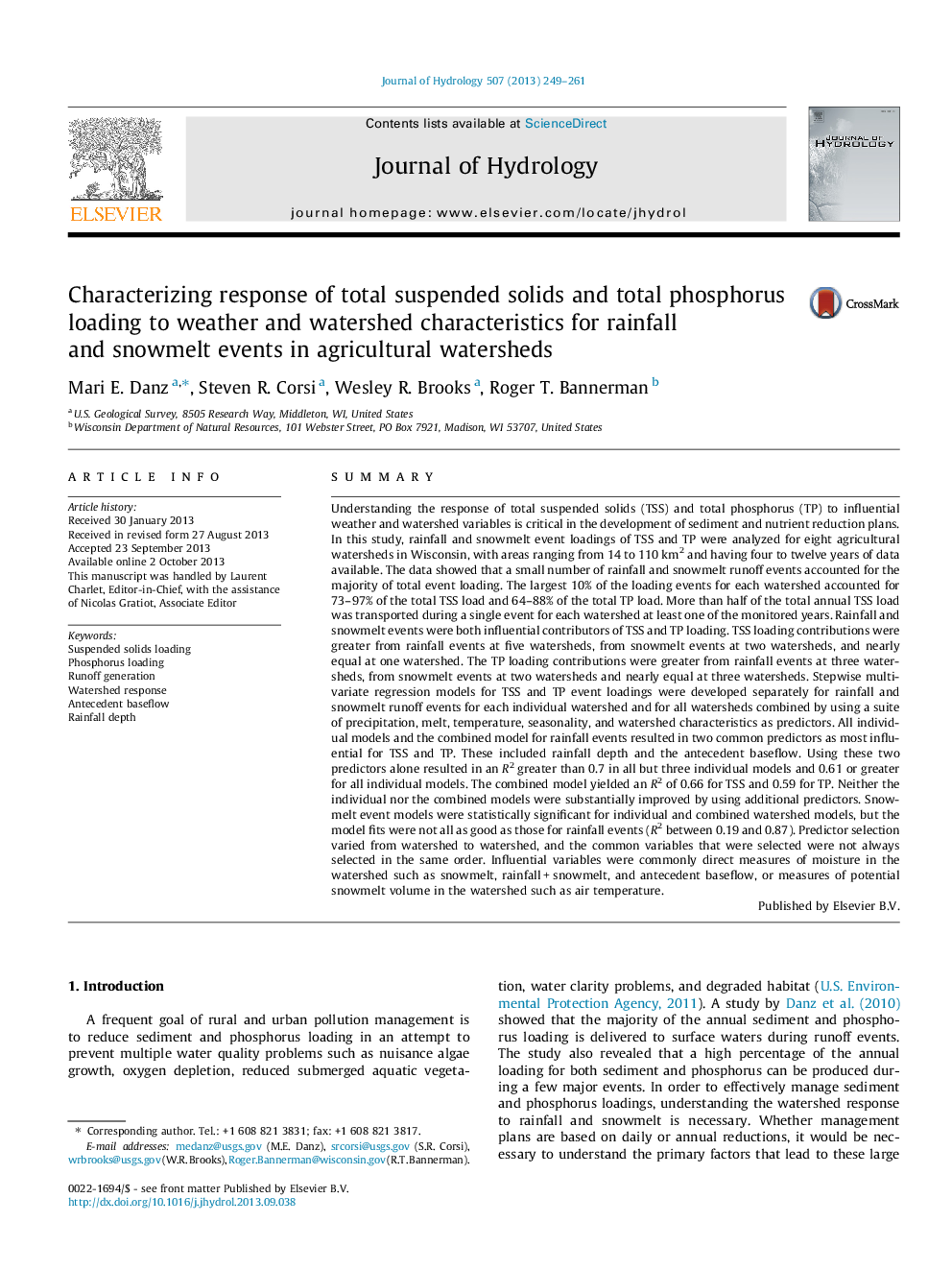| Article ID | Journal | Published Year | Pages | File Type |
|---|---|---|---|---|
| 4576136 | Journal of Hydrology | 2013 | 13 Pages |
•Rain and snowmelt events are both influential contributors of TSS and TP loading.•Large loading events account for a large amount of the annual TSS and TP loading.•Antecedent baseflow and rainfall amount strongly influence TSS and TP loading.
SummaryUnderstanding the response of total suspended solids (TSS) and total phosphorus (TP) to influential weather and watershed variables is critical in the development of sediment and nutrient reduction plans. In this study, rainfall and snowmelt event loadings of TSS and TP were analyzed for eight agricultural watersheds in Wisconsin, with areas ranging from 14 to 110 km2 and having four to twelve years of data available. The data showed that a small number of rainfall and snowmelt runoff events accounted for the majority of total event loading. The largest 10% of the loading events for each watershed accounted for 73–97% of the total TSS load and 64–88% of the total TP load. More than half of the total annual TSS load was transported during a single event for each watershed at least one of the monitored years. Rainfall and snowmelt events were both influential contributors of TSS and TP loading. TSS loading contributions were greater from rainfall events at five watersheds, from snowmelt events at two watersheds, and nearly equal at one watershed. The TP loading contributions were greater from rainfall events at three watersheds, from snowmelt events at two watersheds and nearly equal at three watersheds. Stepwise multivariate regression models for TSS and TP event loadings were developed separately for rainfall and snowmelt runoff events for each individual watershed and for all watersheds combined by using a suite of precipitation, melt, temperature, seasonality, and watershed characteristics as predictors. All individual models and the combined model for rainfall events resulted in two common predictors as most influential for TSS and TP. These included rainfall depth and the antecedent baseflow. Using these two predictors alone resulted in an R2 greater than 0.7 in all but three individual models and 0.61 or greater for all individual models. The combined model yielded an R2 of 0.66 for TSS and 0.59 for TP. Neither the individual nor the combined models were substantially improved by using additional predictors. Snowmelt event models were statistically significant for individual and combined watershed models, but the model fits were not all as good as those for rainfall events (R2 between 0.19 and 0.87). Predictor selection varied from watershed to watershed, and the common variables that were selected were not always selected in the same order. Influential variables were commonly direct measures of moisture in the watershed such as snowmelt, rainfall + snowmelt, and antecedent baseflow, or measures of potential snowmelt volume in the watershed such as air temperature.
